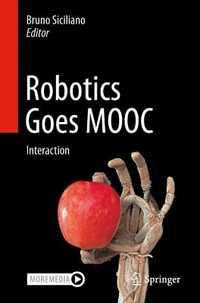| Decision trees and flow graphs | p. 1 |
| Granular computing - the concept of generalized constraint-based computation | p. 12 |
| Bipolar representations in reasoning, knowledge extraction and decision processes | p. 15 |
| Kansei engineering and rough sets model | p. 27 |
| Stochastic approach to rough set theory | p. 38 |
| Zdzislaw Pawlak commemorating his life and work | p. 49 |
| Pawlak rough set model, medical reasoning and rule mining | p. 53 |
| Algebras of terms in Pawlak's information systems | p. 71 |
| Monads can be rough | p. 77 |
| On testing membership to maximal consistent extensions of information systems | p. 85 |
| The research of rough sets in normed linear space | p. 91 |
| Two kinds of rough algebras and Brouwer-Zadeh lattices | p. 99 |
| Balanced fuzzy gates | p. 107 |
| Triangle algebras : towards an axiomatization of interval-valued residuated lattices | p. 117 |
| An approach to parameterized approximation of crisp and fuzzy sets | p. 127 |
| Rough fuzzy set approximations in fuzzy formal contexts | p. 137 |
| Webpage classification with ACO-enhanced fuzzy-rough feature selection | p. 147 |
| Association reducts : complexity and heuristics | p. 157 |
| Planning based on reasoning about information changes | p. 165 |
| Rough approximation operators in covering approximation spaces | p. 174 |
| A new method for discretization of continuous attributes based on VPRS | p. 183 |
| On variable consistency dominance-based rough set approaches | p. 191 |
| Variable-precision dominance-based rough set approach | p. 203 |
| Applying rough sets to data tables containing imprecise information under probabilistic interpretation | p. 213 |
| Ensembles of decision rules for solving binary classification problems in the presence of missing values | p. 224 |
| Expanding tolerance RST models based on cores of maximal compatible blocks | p. 235 |
| Local and global approximations for incomplete data | p. 244 |
| Missing template decomposition method and its implementation in rough set exploration system | p. 254 |
| On possible rules and apriori algorithm in non-deterministic information systems | p. 264 |
| Generalized conflict and resolution model with approximation spaces | p. 274 |
| Rough set approach to customer satisfaction analysis | p. 284 |
| Utility function induced by fuzzy target in probabilistic decision making | p. 296 |
| Dominance-based rough set approach to decision involving multiple decision makers | p. 306 |
| Quality of rough approximation in multi-criteria classification problems | p. 318 |
| Rough-set multiple-criteria ABC analysis | p. 328 |
| A method of generating decision rules in object-oriented rough set models | p. 338 |
| Knowledge reduction in set-valued decision information system | p. 348 |
| Local reducts and jumping emerging patterns in relational databases | p. 358 |
| Mining rough association from text documents | p. 368 |
| NetTRS induction and postprocessing of decision rules | p. 378 |
| Outlier detection based on rough membership function | p. 388 |
| An approach to a rough set based disease inference engine for ECG classification | p. 398 |
| Attribute selection for EEC signal classification using rough sets and neural networks | p. 408 |
| Automatic planning of treatment of infants with respiratory failure through rough set modeling | p. 418 |
| Developing a decision model for asthma exacerbations : combining rough sets and expert-driven selection of clinical attributes | p. 428 |
| A GrC-based approach to social network data protection | p. 438 |
| An interpretation of flow graphs by granular computing | p. 448 |
| Attribute reduction based on granular computing | p. 458 |
| Methodological identification of information granules-based fuzzy systems by means of genetic optimization | p. 467 |
| Optimization of information granulation-oriented fuzzy set model using hierarchical fair competition-based parallel genetic algorithms | p. 477 |
| A grey-based rough set approach to suppliers selection problem | p. 487 |
| A hybrid grey-based dynamic model for international airlines amount increase prediction | p. 497 |
| On the combination of rough set theory and grey theory based on grey lattice operations | p. 507 |
| An ontology-based first-order modal logic | p. 517 |
| Enhancing a biological concept ontology to fuzzy relational ontology with relations mined from text | p. 527 |
| On a parthood specification method for component software | p. 537 |
| Ontology driven concept approximation | p. 547 |
| A statistical method for determining importance of variables in an information system | p. 557 |
| Distribution of determinants of contingency matrix | p. 567 |
| Interpretation of contingency matrix using marginal distributions | p. 577 |
| A model of machine learning based on user preference of attributes | p. 587 |
| Combining bi-gram of character and word to classify two-class Chinese texts in two steps | p. 597 |
| Combining Monte Carlo filters with support vector machines for option price forecasting | p. 607 |
| Domain knowledge assimilation by learning complex concepts | p. 617 |
| Learning compound decision functions for sequential data in dialog with experts | p. 627 |
| Sampling of virtual examples to improve classification accuracy for nominal attribute data | p. 637 |
| A fuzzy-possibilistic fuzzy ruled clustering algorithm for RBFNNs design | p. 647 |
| A partitive rough clustering algorithm | p. 657 |
| A zone-based method for selecting clusterheads in wireless sensor networks | p. 667 |
| An agglomerative hierarchical clustering by finding adjacent hyper-rectangles | p. 677 |
| Evaluating learning models for a rule evaluation support method based on objective indices | p. 687 |
| Mining the most interesting patterns from multiple phenotypes medical data | p. 696 |
| Risk mining : mining nurses' incident factors and application of mining results to prevention of incidents | p. 706 |
| Rule quality measures in creation and reduction of data rule models | p. 716 |
| A distributed hybrid heuristics of mean field annealing and genetic algorithm for load balancing problem | p. 726 |
| Enhancing global search ability of quantum-behaved particle swarm optimization by maintaining diversity of the swarm | p. 736 |
| Identification and speed control of ultrasonic motors based on modified immune algorithm and Elman neural networks | p. 746 |
| A hybrid and intelligent system for predicting lot output time in a semiconductor fabrication factory | p. 757 |
| Combining SOM and GA-CBR for flow time prediction in semiconductor manufacturing factory | p. 767 |
| Developing intelligent applications in social e-mail networks | p. 776 |
| Functional extension of the RSDS system | p. 786 |
| Hybrid music filtering for recommendation based ubiquitous computing environment | p. 796 |
| A novel color image watermarking method based on genetic algorithm and hybrid neural networks | p. 806 |
| Calibration of omnidirectional camera by considering inlier distribution | p. 815 |
| Modified Hough transform for images containing many textured regions | p. 824 |
| Relative color polygons for object detection and recognition | p. 834 |
| Rough set based image segmentation of video sequences | p. 844 |
| Two dimensional laplacianfaces method for face recognition | p. 852 |
| Unsupervised learning of image recognition with neural society for clustering | p. 862 |
| A framework for unsupervised selection of indiscernibility threshold in rough clustering | p. 872 |
| A fuzzy neighborhood model for clustering, classification, and approximations | p. 882 |
| A proposal for comparison of impression evaluation data among individuals by using clustering method based on distributed structure of data | p. 891 |
| Extending microaggregation procedures for time series protection | p. 899 |
| Lattice-valued hierarchical clustering for analyzing information systems | p. 909 |
| Postsupervised hard c-means classifier | p. 918 |
| Rule induction via clustering decision classes | p. 928 |
| Several formulations for graded possibilistic approach to fuzzy clustering | p. 939 |
| Table of Contents provided by Blackwell. All Rights Reserved. |
























